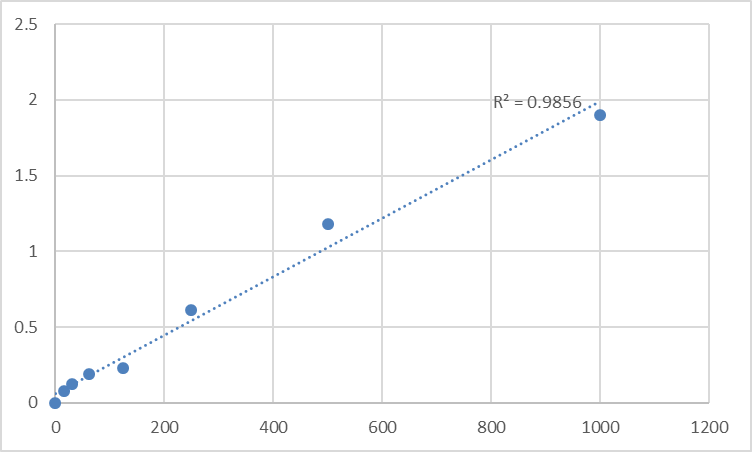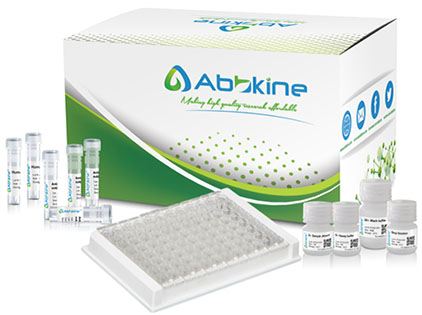| Product name | Human Procollagen III C-terminal Peptide (PIIICP) ELISA Kit |
| Reactivity | Human |
| Applications | ELISA |
| Applications notes | This Human Procollagen III C-terminal Peptide (PIIICP) ELISA Kit employs a two-site sandwich ELISA to quantitate PIIINP in samples. An antibody specific for PIIINP has been pre-coated onto a microplate. Standards and samples are pipetted into the wells and anyPIIINP present is bound by the immobilized antibody. After removing any unbound substances, a biotin-conjugated antibody specific for PIIINP is added to the wells. After washing, Streptavidin conjugated Horseradish Peroxidase (HRP) is added to the wells. Following a wash to remove any unbound avidin-enzyme reagent, a substrate solution is added to the wells and color develops in proportion to the amount of PIIINP bound in the initial step. The color development is stopped and the intensity of the color is measured. |
| Detection method | Colorimetric |
| SampleType | Cell culture supernatants, Other biological fluids, Plasma, Serum |
| Assay type | Sandwich ELISA (quantitative) |
| Assay duration | Multiple steps standard sandwich ELISA assay with a working time of 3-5 hours. It depends on the experience of the operation person. |
| Alternative | PIIINP |
| Kit components | • Human Procollagen III C-terminal Peptide microplate • Human Procollagen III C-terminal Peptide standard • Human Procollagen III C-terminal Peptide detect antibody • Streptavidin-HRP • Standard diluent • Assay buffer • HRP substrate • Stop solution • Wash buffer • Plate covers |
| Features & Benefits | Human Procollagen III C-terminal Peptide (PIIICP) ELISA Kit has high sensitivity and excellent specificity for detection of Human PIIINP. No significant cross-reactivity or interference between Human PIIINP and analogues was observed. |
| Calibration range | Please inquire |
| Limit of detection | Please inquire |
| Usage notes | • Do not mix components from different kit lots or use reagents beyond the kit expiration date. • Allow all reagents to warm to room temperature for at least 30 minutes before opening. • Pre-rinse the pipet tip with reagent, use fresh pipet tips for each sample, standard and reagent to avoid contamination. • Unused wells must be kept desiccated at 4 °C in the sealed bag provided. • Mix Thoroughly is very important for the result. It is recommended using low frequency oscillator or slight hand shaking every 10 minutes. • It is recommended that all samples and standards be assayed in duplicate or triplicate. |
| Storage instructions | The unopened kit should be stored at 2 - 8°C. After opening, please store refer to protocols. |
| Shipping | Gel pack with blue ice. |
| Precautions | The product listed herein is for research use only and is not intended for use in human or clinical diagnosis. Suggested applications of our products are not recommendations to use our products in violation of any patent or as a license. We cannot be responsible for patent infringements or other violations that may occur with the use of this product. |
| Background | PIIICP occurs as a trimer consisting of three identical monomeric PIIICP subunits that are linked by intermolecular disulfide bridges. Structural considerations and site-directed mutagenesis experiments with a collagen minigene have led to the conclusion that at least 4 and probably 6 cysteine residues are involved in intramolecular disulfide bridge formation and that only cysteines 51 and 68 are involved in intermolecular disulfide bridge formation. It has been observed, however, that the region around this intermolecular cystine bridge is critical for the correct formation of intramolecular disulfide bridges and that a Cys->Ser mutation in that region also leads to impaired intramolecular disulfide bridge formation. The PIIICP cDNA sequence has been published and two entries are found in the Genbank data base. The sequence was identical to the sequence published by Ala-Kokko et al., 1989, and deviated from the sequence published by Loidl et al. (1984) in one amino acid. |
| Alternative | PIIINP |

Fig.1. Human Procollagen III C-terminal Peptide (PIIICP) Standard Curve.

Fig.2. Abbkine ELISA kit is series of sandwich ELISA to quantitate specific protein in samples.
You must be logged in to post a review.
Reviews
There are no reviews yet.